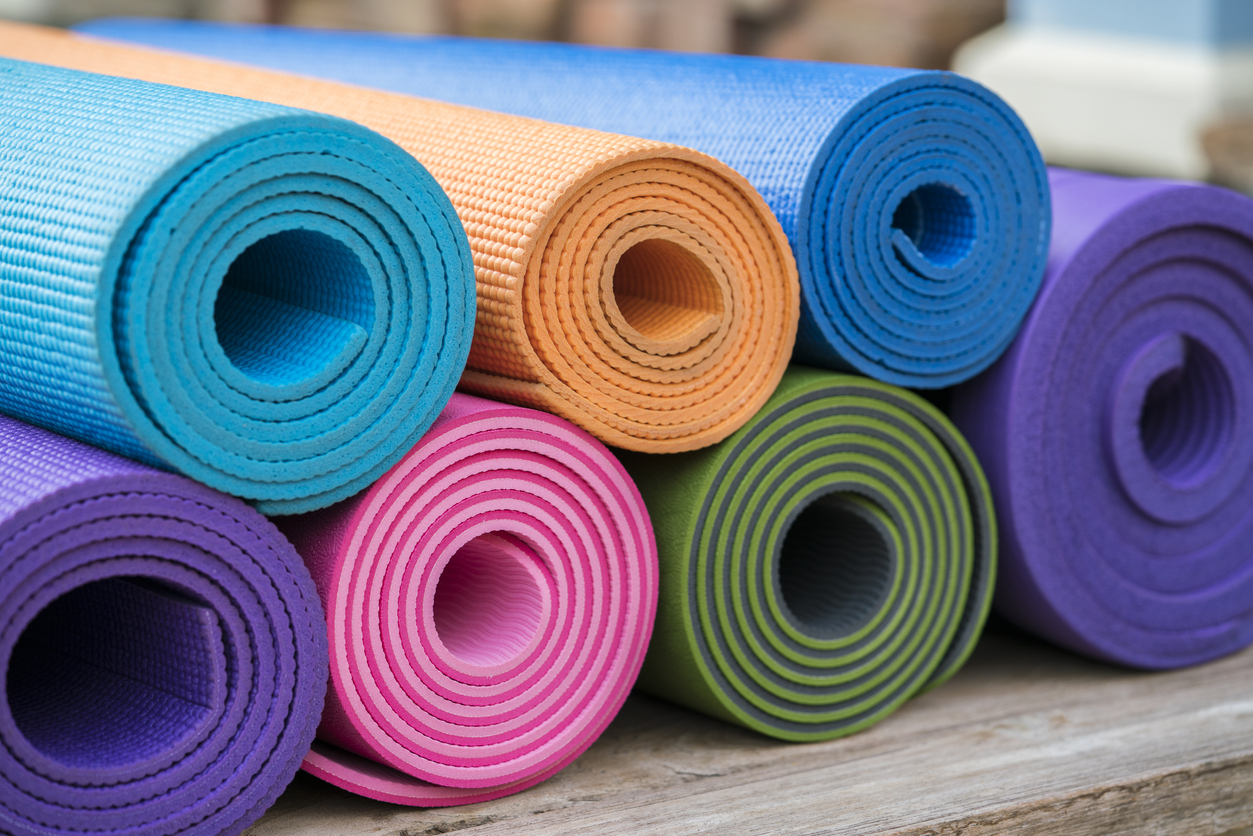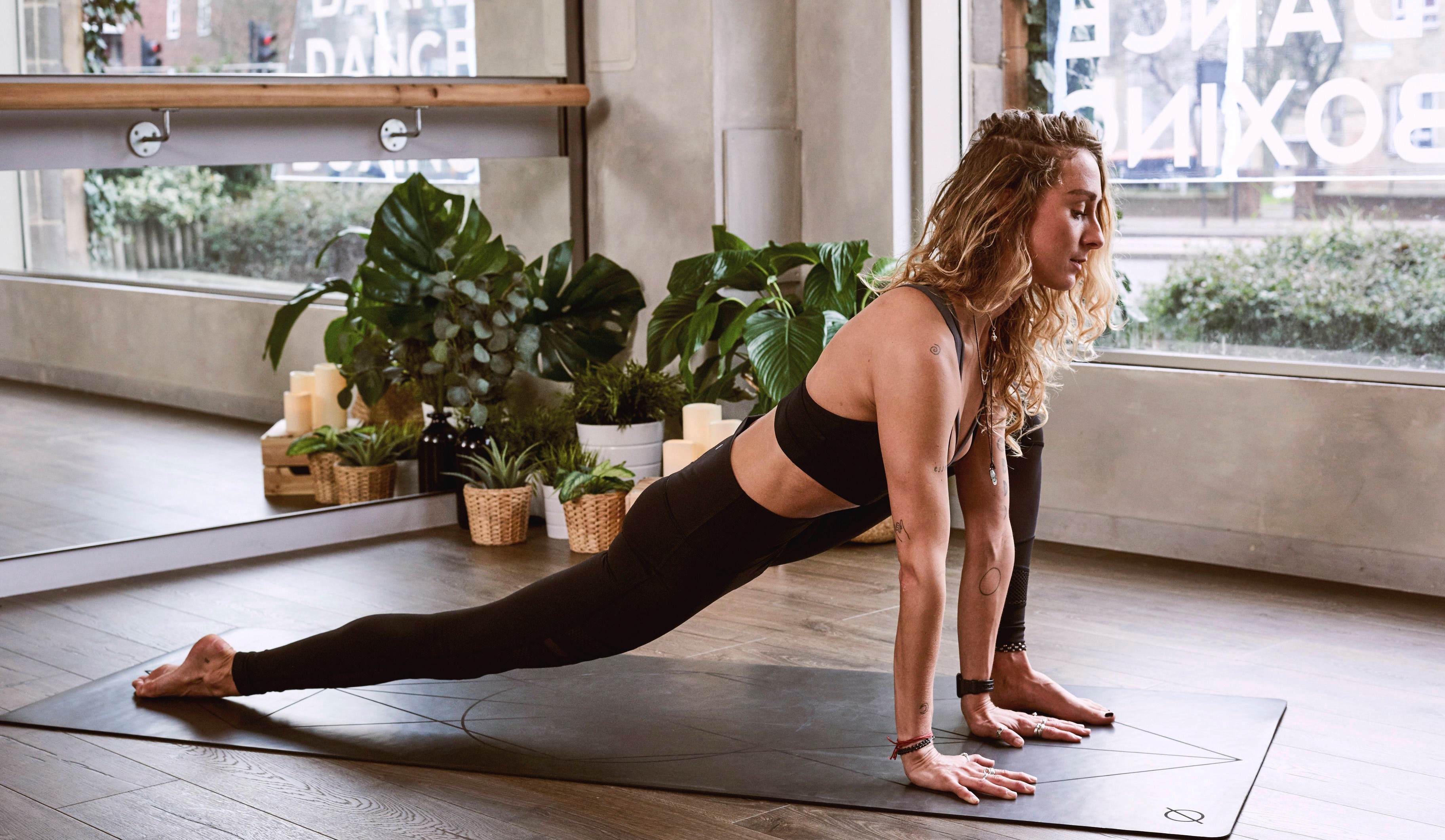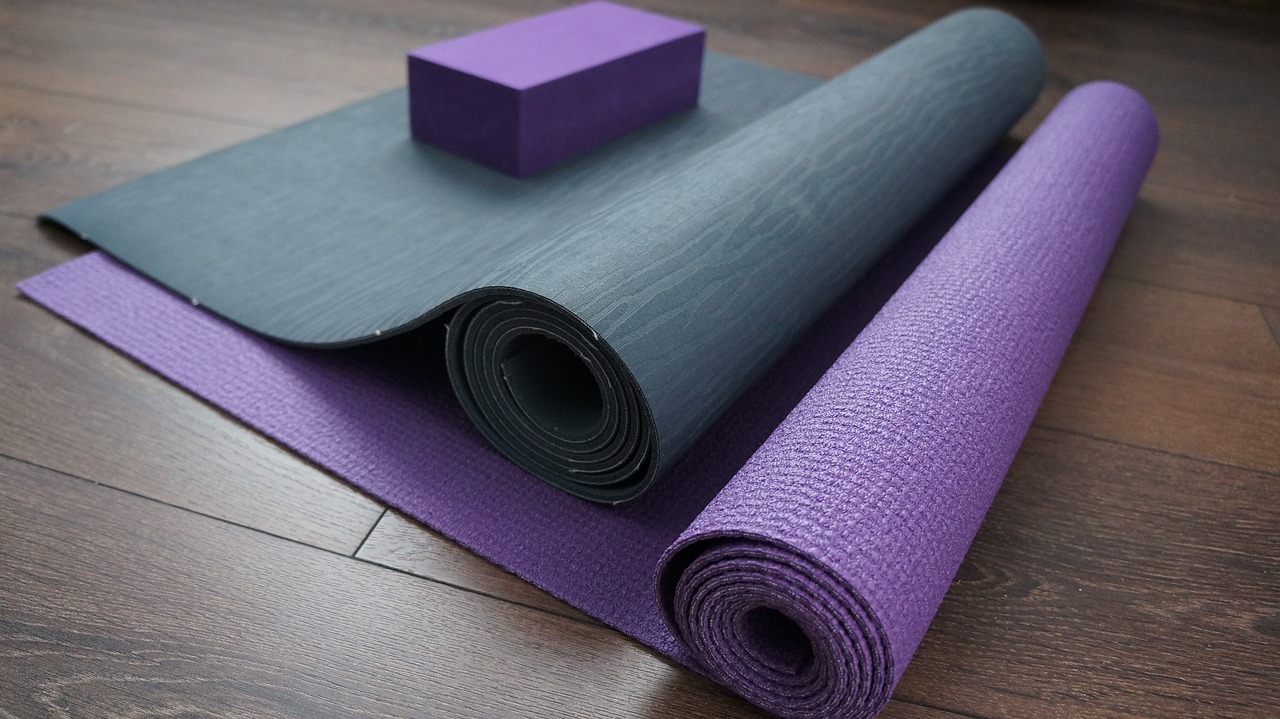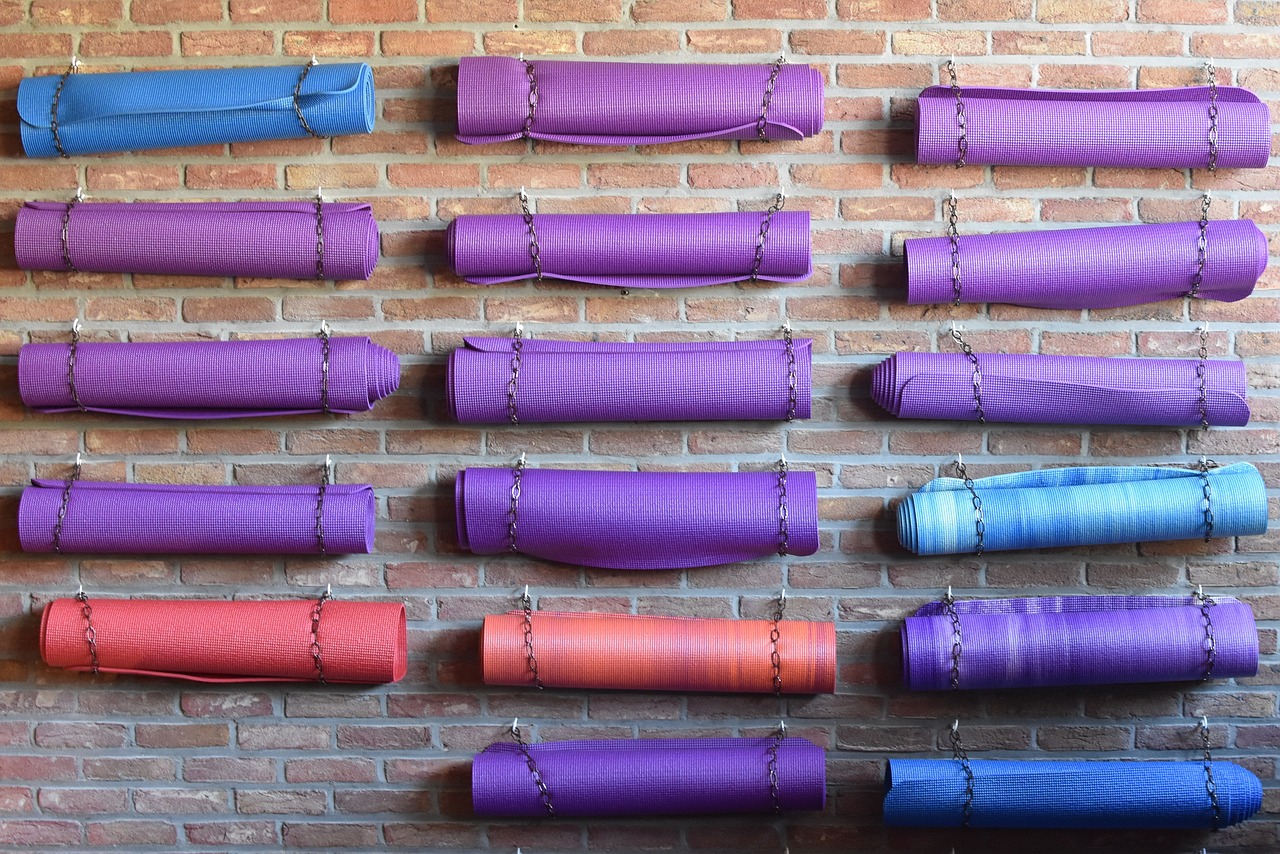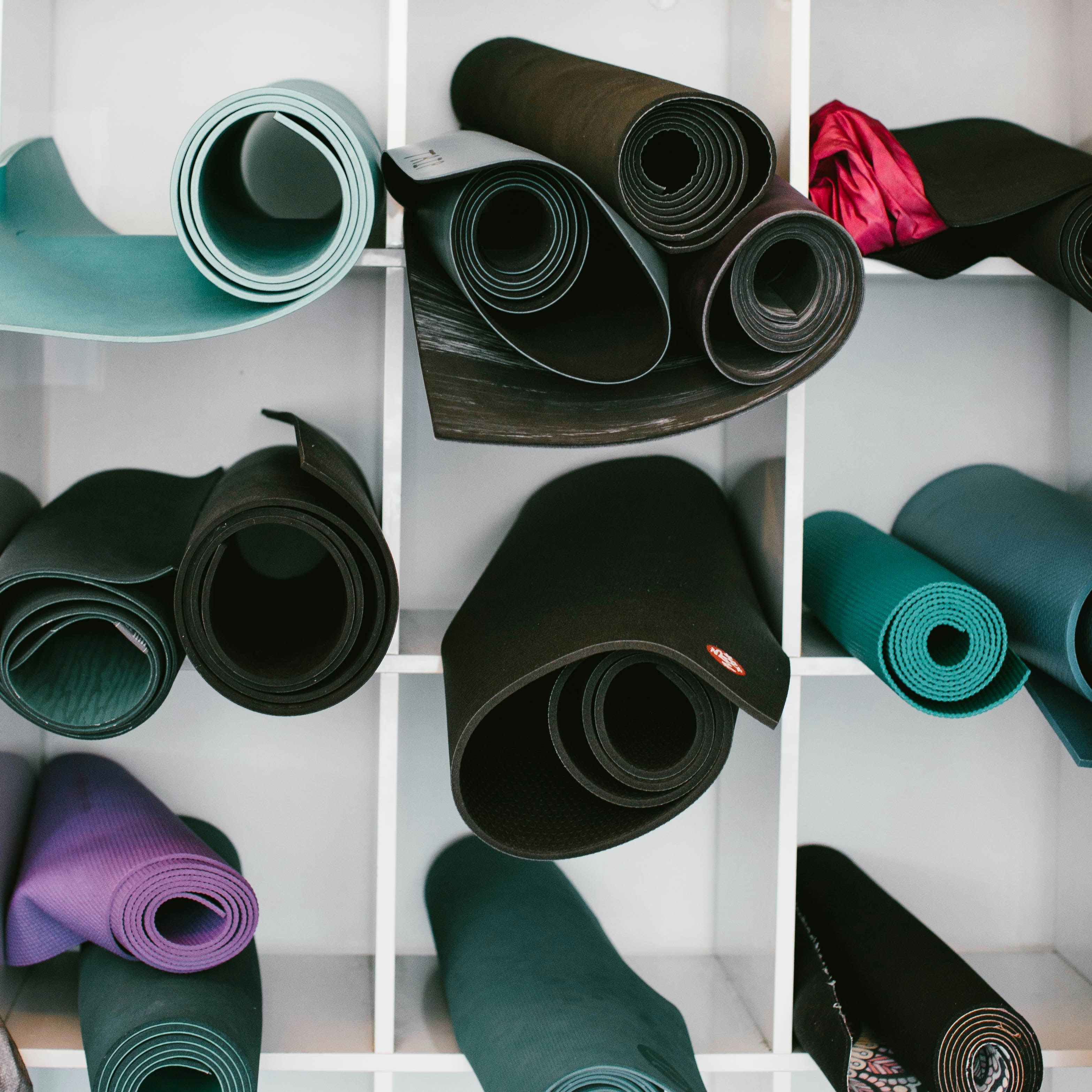How To Chose Your Yoga Mat
Yoga mats are an essential piece of equipment for any yogi or yoga enthusiast. Having the right yoga mat can truly transform and enhance your practice. When choosing a yoga mat, there are several key factors to consider - thickness, material, texture, size, weight and portability.
Thickness
The thickness of your yoga mat is important for providing sufficient cushioning, padding and support. Standard yoga mat thicknesses tend to range from 1/16 inch (1.5mm) for slim, travel mats up to 1/4 inch (6mm) for well-cushioned mats. Consider what styles of yoga you practise and strike the right balance between portability and padding. For example, restorative and yin yoga require thicker mats to prevent pressure points, whereas hot yoga and faster flow styles suit thinner, lighter mats that you can easily grip when damp with sweat.
Materials
The most common materials used for yoga mats include PVC, PER, TPE, cotton, jute and natural rubber. PVC (polyvinyl chloride) mats tend to be the cheapest and most affordable option for beginners. PER (Polymer Environmental Resin) mats are more eco-friendly and sustainable than PVC but come at a higher price point. TPE (Thermoplastic Elastomer) mats are lightweight, easy to clean and ideal for hot yoga. If you prefer natural materials, cotton, jute or rubber yoga mats provide good grip and biodegradability.
Texture
Texture is an important consideration for choosing the right yoga mat. Etched, textured mat surfaces provide more grip and stability which is ideal if you sweat a lot or practice styles requiring secure footing for standing balances. Textured mats also help provide traction with a secure grip between your feet and the mat during more intense flows or hot yoga. However, some yogis prefer smoother yoga mat surfaces for greater fluidity of movement, like in Yin or restorative classes. Gently sliding along a smooth mat surface is desirable when you want to relax into postures for longer holds and stretches without readjusting. Give some thought to when you need extra sticky grip versus times when sliding smoothly into place is better for syncing with different yoga's energetics and intentions. This can dictate whether a grippy textured mat or smooth gliding mat works in better harmony for you across changing seasonal yoga moods and flows.
Size
Standard yoga mat sizes vary but tend to range between 62 to 74 inches long and 24 inches wide. Compact 62-inch long mats allow easier storage and transport for petite builds, but those over 5 ft 8 inch tall require an extra wide and long 72+ inch mat for adequate coverage during seated forward folds and lying poses. If a downward-facing dog or warrior feels restrictive limbs spilling over edges, invest in an oversized option allowing fuller movement freedom without compromising spinal alignment and posture. For hot yoga, look for 63-68 inch "Limber Up" mats that allow your whole body penetration across 26-inch widthways. Where extra floor padding is preferred, 76-inch long mats provide ample coverage space.
Portability
When it comes to the weight and portability of your yoga mat, there is a trade-off between cushioning and ease of transport. Super lightweight travel mats fold up small to fit in your bag or suitcase, but sacrifice plushness. Well-padded studio mats provide ample support and alignment but are bulkier and heavier to carry to class. If you plan to transport your yoga mat a lot, it's worth investing in a quality travel yoga mat bag to keep it clean and easy to carry. Yoga mat bags come in a wide range of styles, sizes and materials including canvas, hemp and cotton. Some feature handy pockets for storing personal items, adjustable shoulder straps for comfort and compression straps to securely attach your mat. Waterproof PVC lining helps keep dirt and moisture out. Dual yoga mat bags allow you to carry two mats together for you and your partner.
Yoga Mat Materials
There are a variety of different materials used to make yoga mats, each with their properties, advantages and disadvantages. Getting to know the core yoga mat materials helps inform better decisions matching specific needs.
PVC (Polyvinyl Chloride) → PVC is the cheapest and most widely used yoga mat material. It is durable yet flexible, provides decent grip, and is water-resistant. However, PVC does contain toxic chemicals so it is not the most eco-friendly option for regular yogis.
Rubber → Natural rubber yoga mats grip well with impressive durability. They provide decent padding and cushioning from hard floors. Natural tree rubber and synthetic rubber variants perform similarly well. As a natural material, rubber suits eco-conscious yogis.
TPE (Thermoplastic Elastomer) → For excellent grip, cushioning and sweat absorption, TPE makes exceptional yoga mat material. It feels beautifully soft rebounding instantly after compressing without losing integrity. Easy-clean TPE prevents bacteria and odour build-up.
Cotton → For supreme comfort and biodegradability, cotton and cotton-blend yoga mats suit gentle styles of yoga. The breathability and absorption feel great but lack stability and slide prevention compared to other grippy yoga mat materials.
PER (Polymer Environmental Resin) → Flexible PER feels similar to soft PVC but edges ahead on performance and sustainability. PER yoga mats provide better sweat absorption and traction ideal for hot yoga. PER feels smooth but grippy across diverse yoga styles.
Best Yoga Mats By Yoga Style
With so many factors to weigh up when comparing the best yoga mat options, it can help simplify your decision by considering what style of yoga you practise most often at home or in the studio. Here is an overview of recommendations for different yoga types:
Hatha Yoga and Gentle Flows
For slower-paced Hatha and gentle movement focusing on static poses and stretches, choose a moderately thick yoga mat around 1/8 inch (3mm) for sufficient cushioning, and knee and joint comfort. Smooth, non-textured mat surfaces provide greater fluidity between transitional movements at a more leisurely pace while still ensuring a decent grip is maintained in kneeling postures. Materials like PER and TPE give a better grip when holding poses longer without hands and feet sliding. Their durable yet soft and flexible properties also assist in gently releasing deeper tension held in muscles during passive stretches for greater comfort.
Vinyasa and Power Yoga
Choose lightweight, thinner mats around 1/16 inch (1.5mm) for vigorous Vinyasa, Power and Flow yoga requiring quicker pose transitions. Avoid bulky, plush mats that are difficult to quickly roll in/out between sequences. Instead opt for grippy, moisture-wicking TPE or PER that prevent hands and feet from slipping when moving fast between positions mid-flow. Consider easy-to-clean sweat-proof surfaces that won't degrade over time despite intense athletic exertion demands placed upon the mat under forceful flow movements class after class. Portability and transportability are also considerations here for flexibility to take anywhere supporting potential pop-up practices spontaneously en route.
Hot Yoga
Prevent sliding or falling due to exceptional sweat and heat generated in Hot Yoga and Bikram sessions by using thin yet grippy 1/16 inch (1.5mm) yoga mats specially designed with microfiber, moisture-wicking materials like PER. This "non-slip towel-like" absorption quality soaks up pools of sweat rapidly whilst still providing stable traction for standing balances and transitions between heating postures. Antimicrobial, odour resistance and antibacterial mat properties are strongly recommended for inhibiting mould, microbes and nasty niffs thriving in the humid hall conditions over time after class perspiration seeps deep down.
Yin Yoga
Super thick, cushioned yoga mats around 1/4 inch (6mm) make Yin Yoga much more comfortable by protecting joints and sensitive areas from becoming stiff or sore in longer-held floor poses. Softer textures and flexible materials allow you to properly relax and release tension into the mat. Versatile latex PER and TPE strike the best balance of squishy support yet stability to hold poses over time. Avoid PVC or rigid mats unsuitable for flexibility.
Prenatal Yoga
Nurture your changing pregnant body with super padded, cushy mats to prevent strain and pressure points during Prenatal Yoga flows and stretches. Prioritise ultra-thick 1/4 inch (6mm) mats offering continuous support for your knees, hips and spine throughout pregnancy, labour and motherhood. Softer textures provide stability suitable for all trimesters without restricting round ligament expansion.
Yoga Mats for Specific Needs
Kids Yoga
Encourage healthy habits for active youngsters with vibrant coloured kids yoga mats made from non-toxic, child-safe materials tested free from lead, latex, phthalates and BPAs. Choose thicker 1/8 to 1/4 inch (3-6mm) mats for comfort and softer microfibre tops that feel sublime while textured bases prevent slipping. Cushioning is tailored to children’s growing bones, muscles and joints. Fun prints and patterns keep kids engaged to use their special mat - ideal gifts to inspire imagination, movement and mindfulness.
Travelling Yoga
Jet-setting yogis need an easily packable yet supportive yoga mat designed with portability in mind. Lightweight PVC and PER exercise mats weigh under 2 lbs for fuss-free transportation, with carrying straps or bags doubling as slings. They still offer decent padding across 72-inch lengths despite slimline designs. Or invest in specialist travel yoga mats that roll, fold or twist up smaller for packing efficiency without compromising too heavily on cushioning.
Tall Yoga Practitioners
Extra long yoga mats give taller yogis the additional surface area needed for proper spinal alignment, pose transitions and extra space to stretch out. Choose oversized 74+ inch long mats ideally 1/4 inch (6mm) thick for versatile cushioning and support. Wider 26-inch+ designs also aid broader frames and athletic builds requiring wider stances for foundational poses. rediscovering balance and serenity through gentle, restorative yoga poses without putting excess strain or tension on the body. Supportive props like bolsters, blocks, straps and blankets further release tension held deeply within muscles and joints. Choose plush 1/4 inch (6mm) thick mats for ultimate joint and spine comfort across all restorative postures. Softer microfibre tops feel sublime while textured bases prevent slipping.
Related articles

Let us know you agree to cookies
We use marketing, analytical and functional cookies as well as similar technologies to give you the best experience. Third parties, including social media platforms, often place tracking cookies on our site to show you personalised adverts outside of our website.
We store your cookie preferences for two years and you can edit your preferences via ‘manage cookies’ or through the cookie policy at the bottom of every page. For more information, please see our cookie policy.

